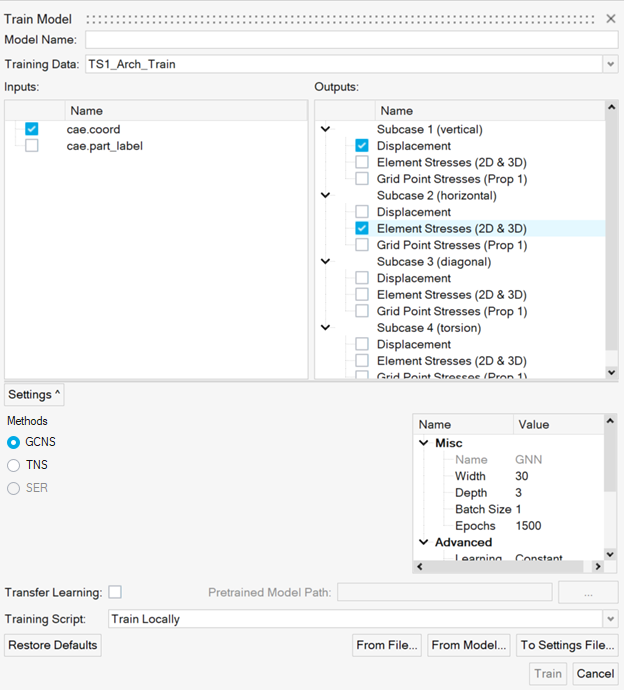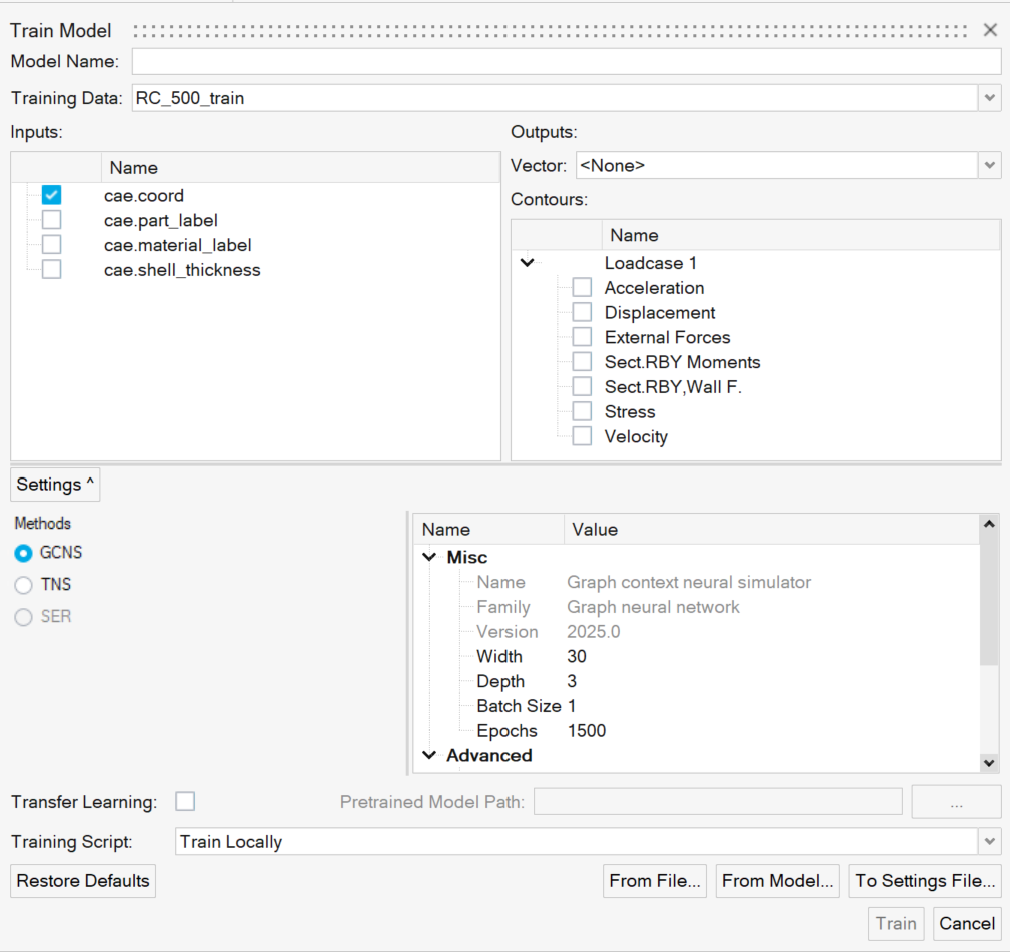PhysicsAI-T: 3000 Custom Inputs with a Global Hook
Tutorial Level: Advanced In this tutorial, you will use custom global input variables (such as varying material properties, global boundary conditions, and so on) for training.
In HyperMesh CFD version 2025 and later:
- The nodal coordinates and part IDs are ready automatically from the .h3d (or equivalent result) files provided. The coordinates are default inputs to the PhysicsAIs model. The part IDs can be enabled by selecting the box next to it.
- If select native decks are available, the thickness and material IDs are automatically parsed. For information about supported decks, see Frequently Asked Questions.
- A global property associated with all nodes in a model such as varying material properties (Young’s Modulus, Poisson’s ratio), global boundary conditions, and so on can be supplied through a .json file with the same name and in the same location as each of the .h3d files. A custom python script, global_hook.py, is needed to read the .json files.
The detailed instructions for each of these cases are provided in this tutorial.
Before you begin, copy the file(s) used in this tutorial to your
working directory.
Note: Unzip the project custom_inputs.zip and inspect the
contents. The global_hook folder contains the
global_hook.py, .h3d, and
.json files for Use Global Hook.
- Default Inputs Imported from h3d
- If only .h3d files are provided, the nodal coordinates
and part ID are imported by default. Only the nodal coordinates are enabled
by default.
Figure 1. Default 
- Natively read in thickness and material IDs
- If select native decks are available in addition to the .h3d files, the thicknesses and material IDs are automatically parsed. The native decks should share the name with the corresponding .h3d files.
